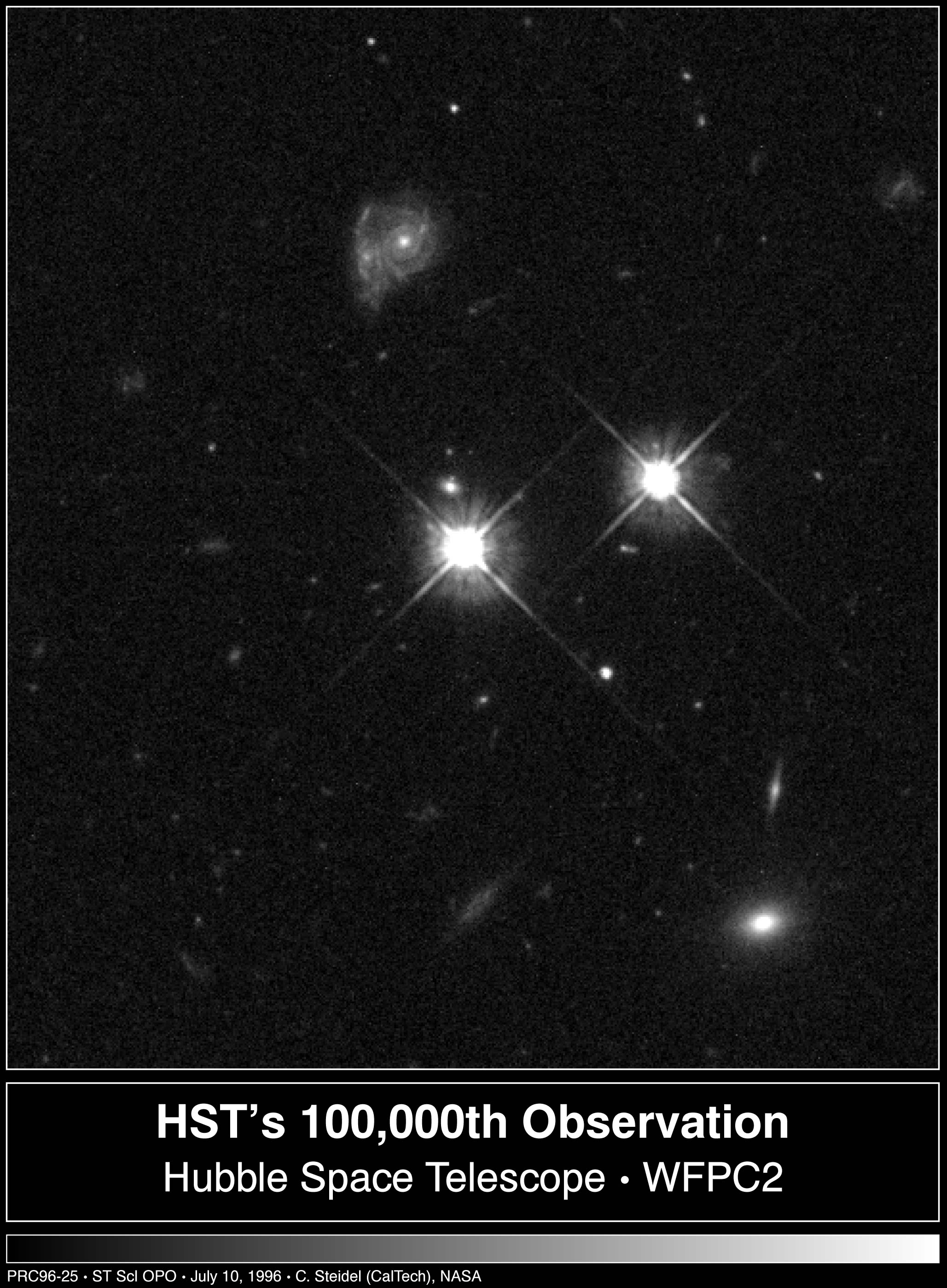
Hubble’s 100,000th Observation
The Hubble Space Telescope achieved its 100,000th exposure June 22 with a snapshot of a quasar that is about 9 billion light-years from Earth. The Wide Field and Planetary Camera 2 clicked this image of the quasar, the bright object in the center of the photo. The fainter object just above it is an elliptical galaxy. Although the two objects appear to be close to each other, they are actually separated by about 2 billion light-years. Located about 7 billion light-years away, the galaxy is almost directly in front of the quasar. Astronomer Charles Steidel of the California Institute of Technology in Pasadena, Calif., indirectly discovered the galaxy when he examined the quasar's light, which contained information about the galaxy's chemical composition. The reason, Steidel found, was that the galaxy was absorbing the light at certain frequencies. The astronomer is examining other background quasars to determine which kinds of galaxies absorb light at the same frequencies. Steidel also was somewhat surprised to discover that the galaxy is an elliptical, rather than a spiral. Elliptical galaxies are generally believed to contain very little gas. However, this elliptical has a gaseous "halo" and contains no visible stars. Part of the halo is directly in front of the quasar. The bright object to the right of the quasar is a foreground star. The quasar and star are separated by billions of light-years. The quasar looks as bright as the star because it produces a tremendous amount of light from a compact source. The "disturbed-looking" double spiral galaxy above the quasar also is in the foreground.
